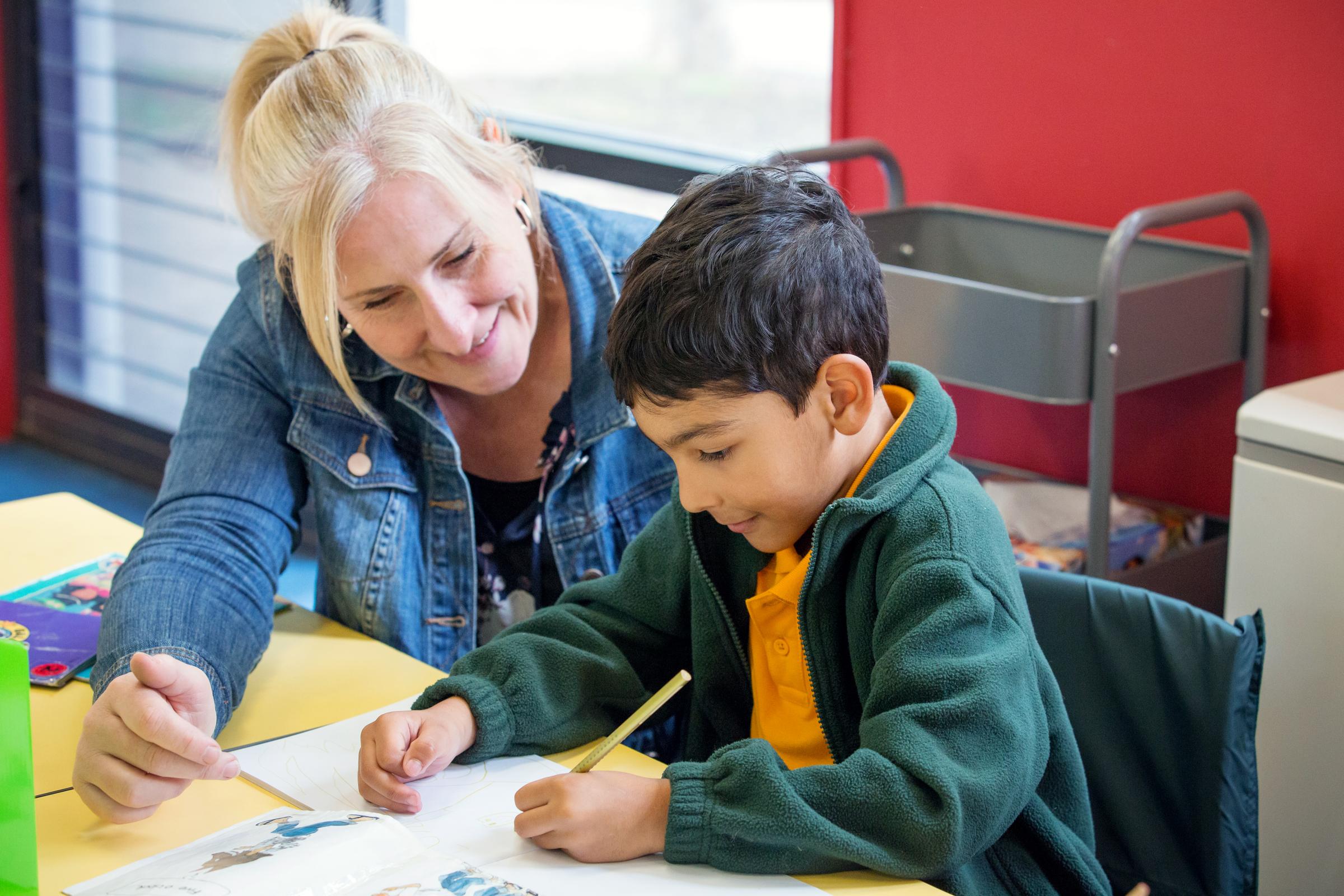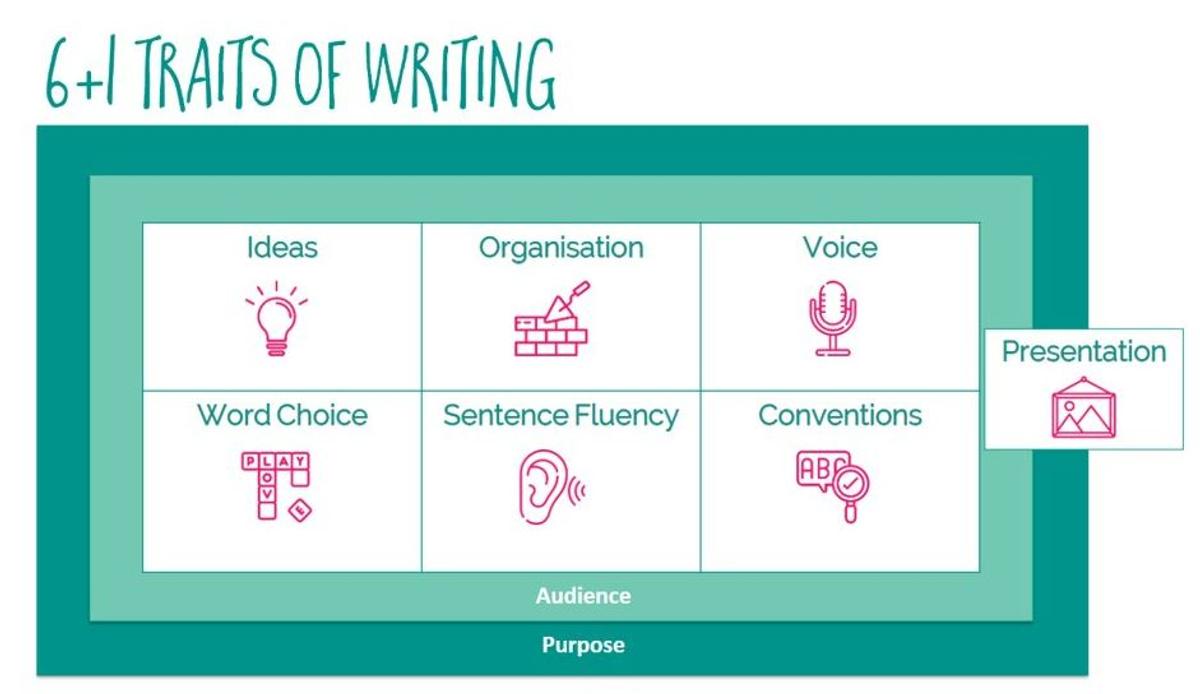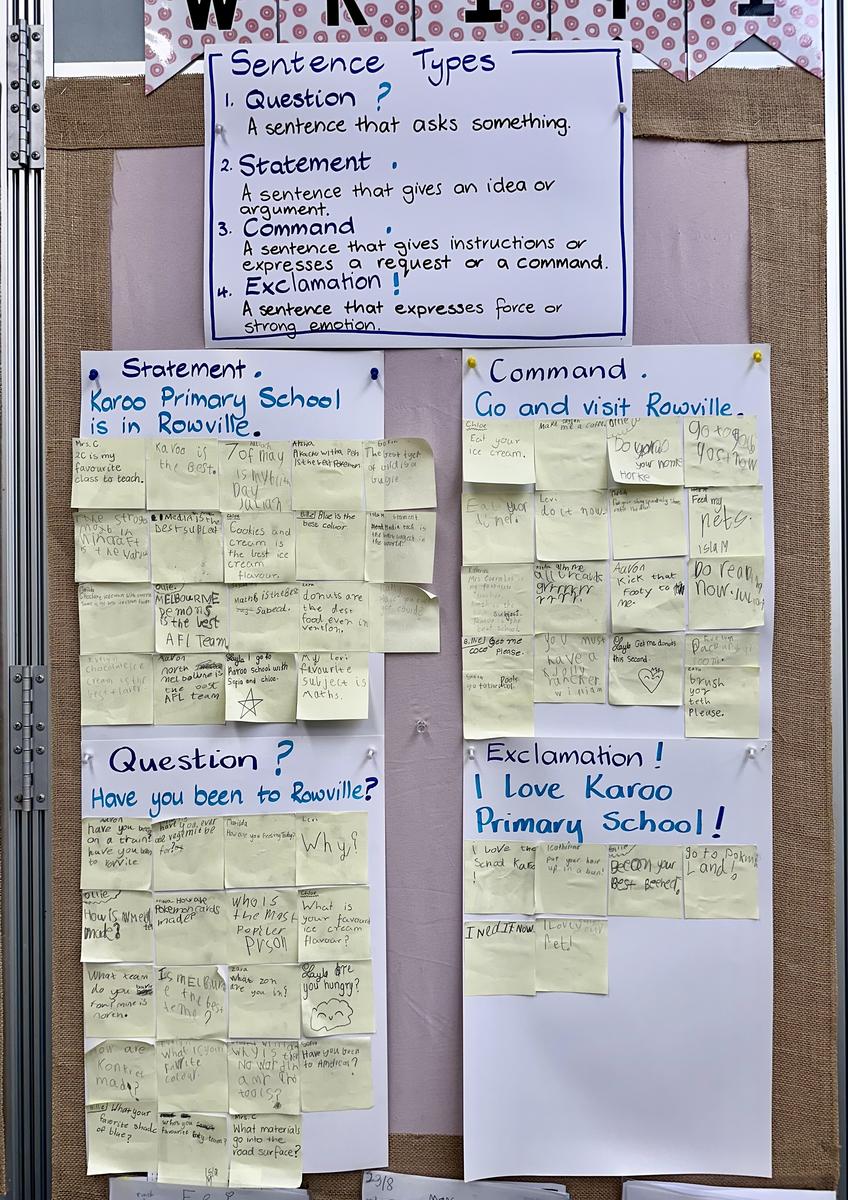Teaching and Learning
Mrs Kylie Middlemiss - Assistant Principal

Teaching and Learning
Mrs Kylie Middlemiss - Assistant Principal
From the time they first pick up a pencil, students are already writers. There is far more to developing a writer than simply being able to spell sentences well and use punctuation correctly. You may have heard about the Writing Traits and wondered how these are used to enhance the quality of our student's writing at Karoo.
Commonly referred to as the '6+1 Writing Traits', these are 6 traits that have been identified as being most commonly used by teachers across the world when providing students with feedback on how to enhance the quality of their writing. These are the quality and clarity of the writer's Ideas, the Organisation of the text to ensure it is easy to read, the writer's unique Voice that comes through in their work, the careful Word Choices the writer has made for impact, the rhythm and flow of the Sentence Fluency in writing and the use of Conventions to guide the reader to read the text as the author intended it to be read.
The Presentation trait is referred to as a "+ 1" as not all written pieces are published. We also understand the traits as being impacted by the Purpose of the piece (is it to inform? To entertain? To instruct?) and the Audience (who is this piece being read by?)


Students from Foundation to Year 6 work on their developing skills around these Traits throughout the year, and often have a couple of traits that are 'spotlighted' during a particular time. Today I would like to do just that - spotlight the trait of Sentence Fluency.
The key qualities we are developing in our writers in regards to this trait are:
| 1. Crafting well built sentences – The writer carefully and creatively constructs sentences for maximum impact. Transition words such as but, and, and so are used successfully to join sentences and sentence parts. |
| 2. Varying sentence types – The writer uses various types of sentences (simple, compound, complex), these enhance the central theme or storyline. The piece is made up of long, complex sentences and short simple ones. |
| 3. Capturing smooth and rhythmic flow – The writer thinks about how the sentences sound. They use phrasing that is almost musical. If the piece was read aloud, it would be easy on the ear. |
| 4. Breaking the “rules” to create fluency – The writer diverges from standard English to create interest and impact. (For e.g. use of sentence fragment or a single word). They may begin with informal words such as well, and, but to create conversational tone. |
The way this trait looks across the 7 years of primary school and what we would expect to see within a student's writing develops over time. At the earlier stages of school we would be looking for simple sentences including a subject and verb, and including a capital letter and a full stop; whereas in the senior years we would look for varying sentence types used for impact, with complex sentences including various language features such as similes and metaphors. We use Mentor Texts to show students how to read 'like a writer' and use these to show good examples of authors who have demonstrated this trait well.


My favourite book to use when teaching Sentence Fluency is "Tilly" by Jane Godwin, the author we had come out and visit us recently. Jane's rhythmic flow of her sentences are beautiful to read and it is mentor text I go to time and time again to demonstrate this trait.


Sentence Fluency in Year 2
In Year 2 students have currently been looking at the Sentence Fluency Trait and exploring ways they can improve the quality of their sentences. I had a chat to a few of the Year 2 students this week about what they have been working on:
"Run on sentences are too long and they're missing a full stop at different points. Some need to have multiple full stops because they're too long and need to be shorter! Sentences that are too long can be boring" Will, 2C
"I've been learning about compound sentences. It's using a word to connect two sentences like for, but, so, not and...there are lots!" Catherine, 2C
"We've been using commas. Sometimes we use them for a breath and sometimes for making a list" Kai, 2B
"We've got statements which are short sentences and questions which ask a question. An exclamation feels exciting to read like when you open your presents on Christmas and your voice sounds just like that!" Lily, 2B
We have some very clever writers in our school!
Kylie Middlemiss
Acting Assistant Principal
Teaching and Learning

